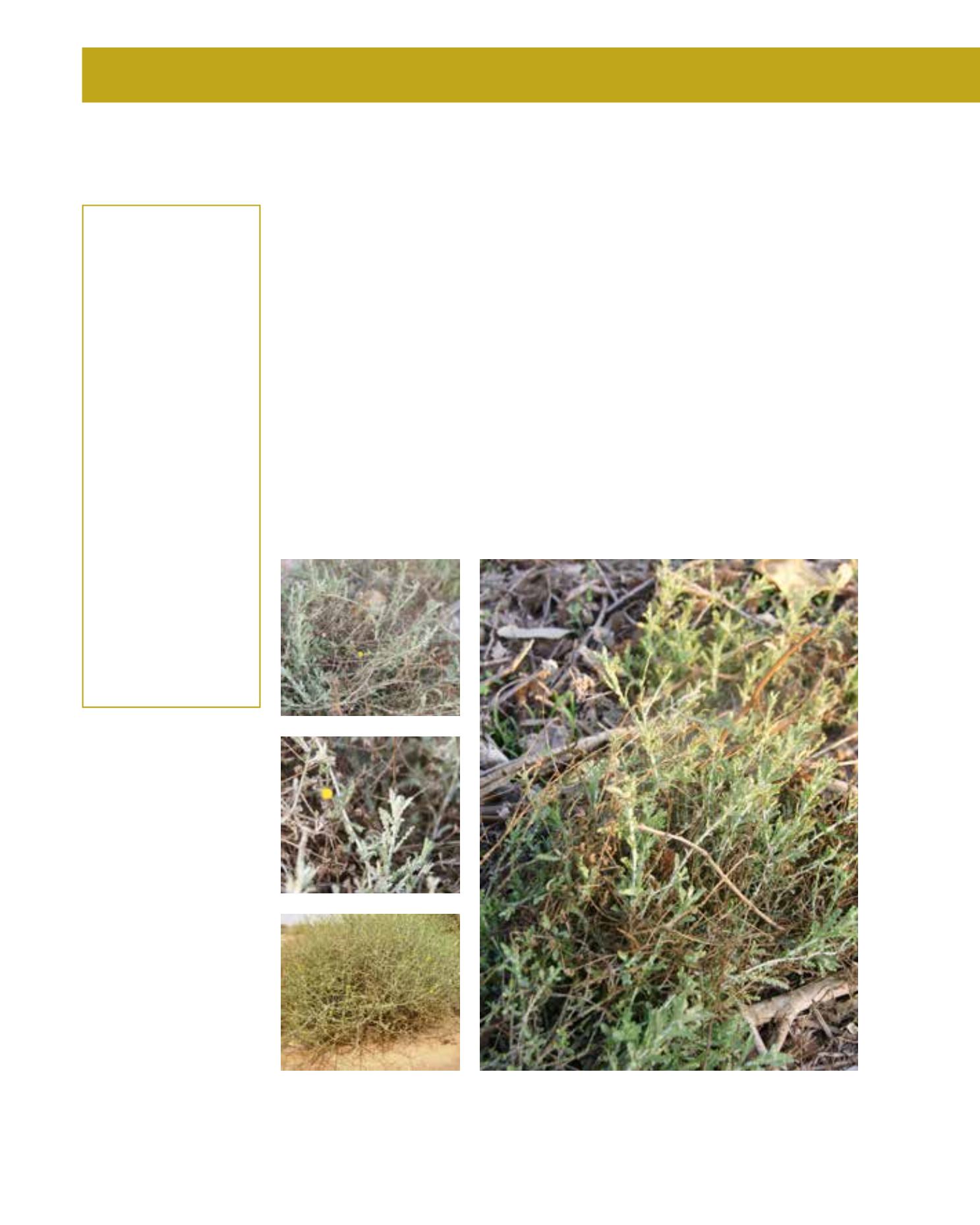

GENERAL
Origin
:
sub-tropical
Vigour
:
fast growing
Humidity
:
very arid, semi-
arid
Propagation :
direct sowing,
cuttings
Maintenance :
low
CONDITIONS
Urban climate :
vulnerable
Dessication :
resistant
Stagnant water :
vulnerable
Irrigation
:
none
Salinity/ppm :
very high (20000
ppm)
Hardiness
:
-6°C
SHAPE
Type
:
sub-shrub
Height
:
0.4 m-0.5 m
Spread
:
1 m
Foliage
:
evergreen
FLOWER
Colour
:
yellow
Size
:
0.8 cm
Period
:
February - April
FRUIT
Type of fruit :
achene
Fruit size
:
0.2 cm
Pulicaria crispa is indigenous to Saudi Arabia, and is distributed nearly all over the entire Arabi-
an peninsula. However, it is distributed in Africa as well, where it can be found along the Sahel
zone. In Africa, it is used as fodder plant and as a remedy. In the Sahara, an infusion for drinking
is made from this aromatic plant. The resulting drink has a gingery taste. In Arabic, P. crispa is
called jisjas or sabat. Jisjas is a fast-growing bushy, annual or perennial desert plant. It grows like
a small dwarf shrub between 40 and 50 cm high, and with numerous branches emanating from
the base. The foliage is a fresh olive-green. The alternately arranged and sessile leaves are pube-
scent. The flowers appear in spring in 8-mm yellow knobs with an aromatic scent. The fruits are
2-mm achenes with small hairy tufts. The roots are lateral and tap-rooted. Jisjas likes sandy and
rocky locations and is highly salt-tolerant. This plant is a native, and very well adapted to harsh
desert conditions. It can withstand hot winds, desiccation, heat and poor soils. Maintenance or
irrigation is not necessary after planting out in the location. Propagation is by direct sowing or by
cuttings, and probably by self-seeding. Pulicaria crispa is a very useful plant for the rehabilitation
of natural plant cover. It can be used in seed mixtures for areas that should be recolonised, or for
environmental consolidation. But in natural garden themes such as rock or steppe gardens, too,
it will be effective as groundcover, grouped or massed planting.
251
Pulicaria crispa,
Asteraceae
Fleawort,
jisjas, sabat
















